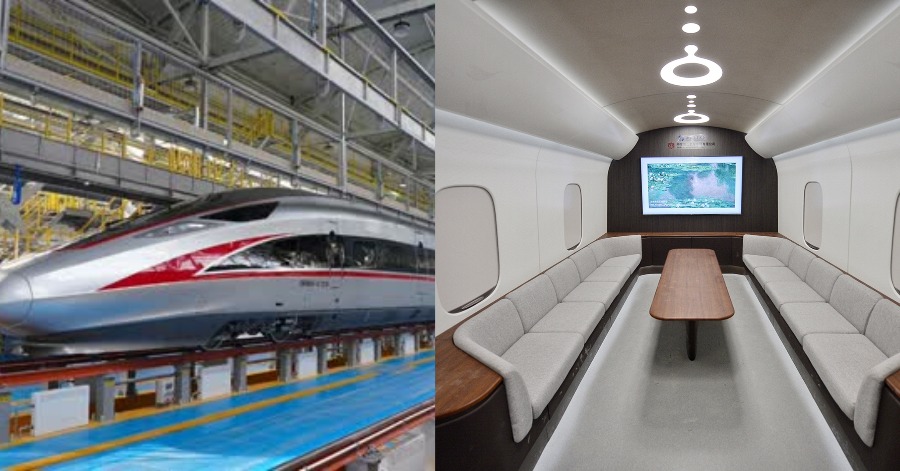A prototype locomotive using high-temperature superconducting (HTS) maglev technology has been revealed in southwest China’s city of Chengdu and it is called the “Super Bullet Maglev” train. The train is capable of reaching speeds of 620 kilometers (385 miles) per hour.
The latest technology makes it look as if the train is floating along the magnetized tracks. The particular prototype is in the measurement of 21-meter-long (69 feet). According to the news, university researchers also have constructed 165 meters (541 feet) of the track to demonstrate how the train would look and feel in transit.
Deng Zigang who is the deputy director of the university’s research center for super-high-speed maglev transport in low-pressure tubes said, “Although the theory sounds good, everyone saw it (HTS maglev technology) as a lab toy in the past, without tests in a real situation”.
“China has been a world leader in the construction of the high-speed railway. By the end of 2020, the country had 37,900 km of high-speed rail lines in service, the longest in the world”, said China’s railway operator.
This train is designed to levitate from the tracks and propelled by powerful magnets to avoid wheel-rail friction, which is designed to break the speed bottlenecks facing high-speed trains. Involving an investment that total of 60 million yuan (more than RM3.7 million), the HTS maglev project was jointly developed by Southwest Jiaotong University, China Railway Group Limited, and CRRC Corporation Limited.
According to experts, HTS tech is more suitable for the futuristic concept of superfast transportation in vacuum tubes, where trains could hit speeds of over 1,000 kph. “The HTS technology can make the train float without electricity, and it can be moved with just one hand”, said Deng.
A reporter surprisingly succeeded in moving the 12-tonne levitated locomotive with one finger at the site. Wu Zili who is a senior engineer with the Southwest Jiaotong University said the cost of the (HTS) maglev system is estimated to be slightly higher than high-speed rail, but the cost is expected to go down further if mass production of main components is achieved.
Sources: CNN, YouTube New China TV.









Leave a Comment